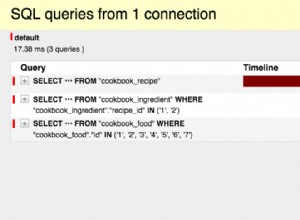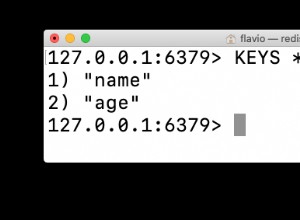due consigli generali:1.) non aver paura di duplicare. È spesso una buona idea archiviare gli stessi dati formattati in modo diverso in raccolte diverse.
2.) se vuoi ordinare e riassumere le cose, aiuta a tenere i campi di conteggio ovunque. Il metodo di aggiornamento atomico di mongodb, insieme ai comandi upsert, semplifica il conteggio e l'aggiunta di campi ai documenti esistenti.
Quanto segue è sicuramente imperfetto perché è digitato dalla parte superiore della mia testa. Ma meglio cattivi esempi che nessun esempio ho pensato;)
colletion tweets:
{
tweetid: 123,
timeTweeted: 123123234, //exact time in milliseconds
dayInMillis: 123412343, //the day of the tweet kl 00:00:00
text: 'a tweet with a http://lin.k and an http://u.rl',
links: [
'http://lin.k',
'http://u.rl'
],
linkCount: 2
}
collection links:
{
url: 'http://lin.k'
totalCount: 17,
daycounts: {
1232345543354: 5, //key: the day of the tweet kl 00:00:00
1234123423442: 2,
1234354534535: 10
}
}
aggiungi nuovo tweet:
db.x.tweets.insert({...}) //simply insert new document with all fields
//for each found link:
var upsert = true;
var toFind = { url: '...'};
var updateObj = {'$inc': {'totalCount': 1, 'daycounts.12342342': 1 } }; //12342342 is the day of the tweet
db.x.links.update(toFind, updateObj, upsert);
Ottenere i primi dieci link ordinati per numero di tweet che hanno?
db.x.links.find().sort({'totalCount:-1'}).limit(10);
Ricevi il link più twittato per una data specifica?
db.x.links.find({'$gt':{'daycount.123413453':0}}).sort({'daycount.123413453':-1}).limit(1); //123413453 is the day you're after
Ricevi i tweet per un link?
db.x.tweets.find({'links': 'http://lin.k'});
Ricevi gli ultimi dieci tweet?
db.x.tweets.find().sort({'timeTweeted': -1}, -1).limit(10);




